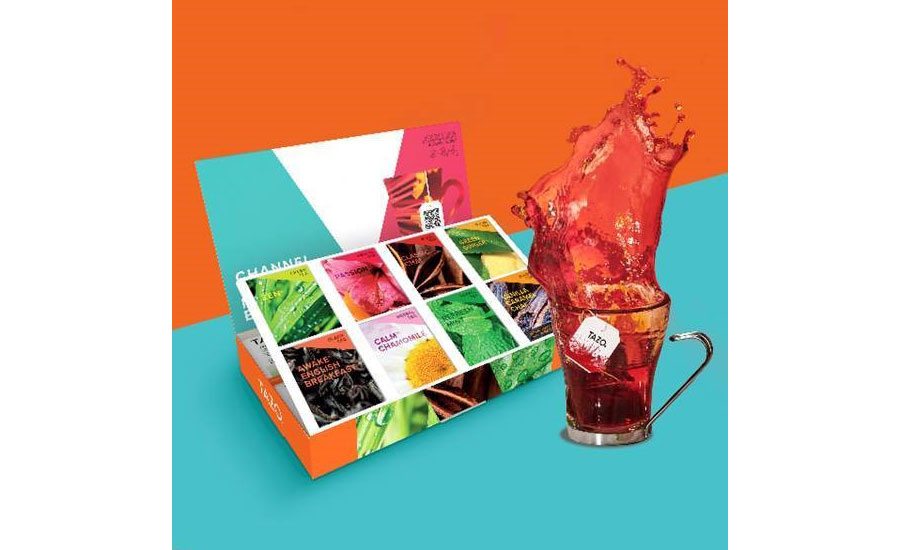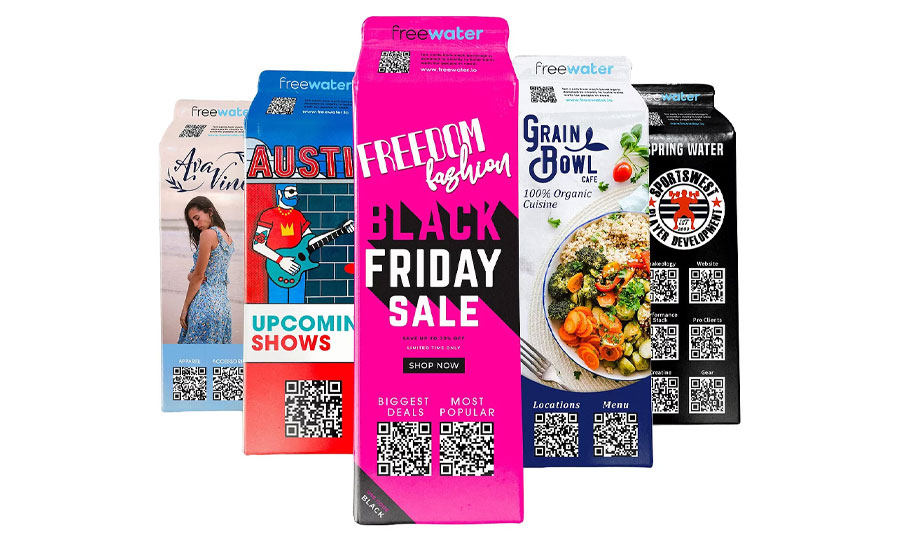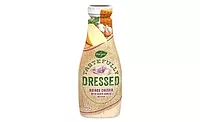Packaging Equipment
Coding technology keeps pace with innovation
Interactivity, traceability among impactful trends

In the current beverage packaging landscape, coding of product packaging is becoming more automated and integrated into beverage production machinery. As a result of new packaging substrates and the necessity for increased speed and dependability, many technologies have seen substantial advancement in the past several years. As such, manufacturers are moving fast to keep up on trends influencing advancing coding technology to generate revenue from this growing market.
Shambhu Nath Jha, client research partner at Fact.MR, Dublin, Ireland, shares five specific areas of shifts in coding technology that are impacting the industry:
- Improved integration capability: Although equipment controls have stayed mostly unchanged, machines have improved to better integrate across the packaging production enterprise, especially to guarantee that case coding corresponds to the package itself.
- Visual feats: Packaging has gotten more graphic, so coding equipment has as well. To help ease operation, boost efficiency and maximize control, coding suppliers are introducing better and more visibility.
- Traceability: The Product Traceability Initiative, an action plan to shift the complete supply chain into electronically traceable, was established. The food and beverage industry has become the frontrunner in the initiative as the regulatory pressure has made traceability of products essential.
- Customer-centric strategy: Manufacturers' requirements for coding and labeling equipment are being pushed less by manufacturers, and more by their customers, such as Walmart, Target and Costco. Manufacturers are using coding and labeling equipment in ways influenced by these retail influencers.
- Proactive approaches to adverse conditions: More variation is used throughout coding on consumer products that sustain tough conditions. Additionally, improved coding reliability and durability is being deployed, along with time-bound coding.

Image courtesy of TAZO Tea
Packaging and coding challenges
Among these aforementioned trends in packaging are others that have created some challenges for coding technology as of late. For example, those involving high-density polyethylene packaging (HDPE) used often for milk jugs and refillable plastic bottles and PET containers.
“Different substrate materials are required as a result of new advancements in polyethylene terephthalate (PET) and aluminum packaging,” Nath Jha says. “PET containers with metallized or pearlescent colorants are currently being developed, but these materials are somewhat difficult to have coding upon.”
In addition, Nath Jha notes the trend toward single-serve packaging also has created a problem with clear, high-resolution coding on smaller products.
“QR codes on packaging that encourage people to interact with the brand must also be scanned and provide desired information, which are some of the challenges faced by coding tech for such particular packaging,” she says.
Nikki Johnson, director of marketing for Domino North America, Gurnee, Ill., notes that the recent labor shortage is another challenge affecting everything manufacturing-related, including putting codes on products.
“Automation is key to solving the issues,” she says. “Not having to depend on people to keep coders running and printing the right codes is the most compelling factor manufacturers are facing.”
However, she adds that the typical buyers of coding and marking equipment often lack knowledge and confidence to fully appreciate what automation can do for them. Such buyers essentially are just trying to make it through the day and simply don’t have time to pursue cutting-edge innovation.
“Sometimes taking a step back and learning a smarter way just isn’t in the cards [for these buyers],” she says. “Our opportunity at Domino is to help these buyers understand the value of automating their coding and marking processes and begin reaping the benefits right away, in the form of increased efficiencies and less headaches.”
Johnson notes that another hurdle is waste; when coding errors occur, it is usually due to human error and a lack of training or personnel.
“As a result, an insurmountable amount of rework and waste occurs,” she says. “This flies in the face of most sustainability initiatives brands are committed to and by which they are evaluated.”
Given the importance of sustainable packaging materials and processes to brands, Johnson notes that new materials such as sustainable plastics are considered to be greener options, but can present challenges during coding.
“Laser marking/coding is also considered a more sustainable printing option and is often paired up with these types of substrates,” Johnson explains. “But since these plastics are constructed with new and more natural materials, marking on them can be a challenge.”
To address all of these challenges, Johnson recommends working in collaboration. For instance, Domino works with material producers to test its laser marking systems on new materials as they are being developed, all in an effort to offer brands a more holistic choice.
“Technology is such that it can be easily adapted if all of the stakeholders are sharing information and working together toward a solution,” she says. “It is less about the technologies adapting, but more about complimenting the more sustainable plastics. One affects the other, so adjusting, or innovating, together is the solution.”

Image courtesy of FreeWater
Coding innovations
Fact.MR’s Nath Jha notes that the key to the supply chain of custody is coding, as the application of a code is the initial stage in determining a product's validity, informing the supply chain management system of the product's nature, where and when it was manufactured, and, in some situations, its intended destination.
“It is the key that unlocks the chain of custody when products need to be recalled, allowing the manufacturer to recall defective products quickly and precisely, protecting consumers and maintaining the brand's integrity,” she says. “For traceability or regulatory compliance, production processes must be able to respond swiftly to changes in labeling or coding, as well as marking boxes for supply chain management.”
Innovations are being made by industry stakeholders to ensure that coding processes are not only adequate, but continue to advance and improve to meet the demands of the industry.
Videojet Technologies, Chicago, recently expanded its portfolio with the introduction of VideojetConnect Exchange, a programming interface that enables easy access to the data available in most new and installed Videojet printers and lasers. Through a cloud-based connection, the VideojetConnect data provides analytic tools to help maximize the uptime of coding devices, track the performance of the packaging operation and automate inline inspection processes.
“We appreciate that for many manufacturers, having a unique dashboard for each equipment vendor can be sub-optimal, especially when they may have already invested in a plant-wide IoT platform,” said Bob Neagle, Videojet’s commercial director of digital products and services, in a statement. “VideojetConnect Exchange offers the best of both worlds, as individual coding device data can be processed and organized in the Videojet cloud and then easily integrated into other systems and dashboards for operations associates to use as part of their daily routines.”
With the introduction of VideojetConnect Exchange, manufacturers using standard programming methods easily can incorporate the data captured by its applications into their automation and analytic systems.
“Using a REST-API, IT and OT teams can create straightforward code to access the data they require. Web browser-based flow editors, such as Node RED, can be used to create the underlying calls and route the returned data,” the company said in a statement. “VideojetConnect Exchange is organized so that a common set of device status information can be accessed in a single call to reduce overhead. Its developer web page provides working examples and the ability to browse and discover data sets and returned code examples that can be used for troubleshooting.”
In addition, the company shared that views of the coding device information can be customized and set to reside in any convenient third-party IoT-supporting software as a service (SaaS) environment, and that based on the typical role of the coding device in the production process, the possibilities for leveraging the data go beyond maintenance.
“Coding device status and counts can often be the best representation of real-time production, while comparing related primary package and case coding device data can enable the calculation of quality yields or highlight bottlenecks in a production,” Neagle said.
Keys to coding success
Fact.MR’s Nath Jha notes that the variety in packaging’s format, size and shape has opened up new doors for food and beverage packaging, it also has increased the complexity of date coding processes, including working with new substrates and determining the ideal location for the code on the package. Fortunately, coding equipment and ink options are evolving.
“To comply with rules and preserve their brand, beverage manufacturers must use high-quality coding and marking,” she explains. “Beverage firms can only track their products after they leave the factory if they have accurate, long-lasting tags that print clearly even on wet surfaces.”
Based on current trends, the food and beverage industries will place a greater emphasis on personalization of products and packaging, which will be aided by advanced printing technology.
“This evolution also includes the use of progressively minimum packaging, which can help to reduce waste and transportation costs,” she says. “Advancing coding technology will be the guiding light for the food industry to achieve the feat over the course of time.”
Domino’s Johnson adds that continued collaboration between stakeholders is the only way to improve and provide packaging solutions that help sustain the environment.
“Find a coding and marking equipment provider you can truly partner with, one who is working with adjacent OEMs, and bring us to the table early in a project,” she says. “Partnership is key. If doing this right, beverage manufacturers will avoid common pitfalls and benefit from innovation as it is happening.”
Brands latching on
Brands have taken note of advances in coding technology’s capabilities, and are leveraging these to innovate with their packaging. Earlier this year, Swedish microbrewer Ängöl Brewery released Helt Spårat, traced by IBM Food Trust as Sweden’s first blockchain-traceable beer.
The beer was made using only locally and sustainably produced ingredients, and the farm where the grain was grown runs on solar power and fuels its tractors with renewable diesel gasoline, the company said in a release. Among other sustainable practices, the residual products from production also are used as feed for a local farm’s dairy cows.
The company notes that as the beer is made, users record data about the ingredients on an unchangeable digital ledger shared among participants, who can collaborate with end consumers now connected to the entire lifecycle of a beer. By scanning a QR code on the bottle, consumers can follow the story of Helt Spårat from when the grain was sown in 2019 through key milestones, such as when the hops were harvested at Sweden’s only organic commercial hop farm, the company said.
“The blockchain-traced story of Helt Spårat spans roughly two years and takes consumers on a tour of Sweden in the form of interactions throughout the supply chain,” the company said in the statement. “Consumers have a complete view of production, which began on April 22, 2019, when farmer Wilhelm Aschan sowed the grain at his farm Ullälva, all the way through to when the beer was bottled on March 13, 2021, at the brewery, a three-hour drive away.”
“By showing how the beer was made and where the ingredients came from, this information helps [to] bridge the gap consumers often notice when brands make claims of sustainability,” the company said in the statement.
Another innovator using advances in coding technology is Austin, Texas-based FreeWater, a philanthropic marketing startup implementing its eco-friendly, BPA-free product as a new type of advertising medium; 10 cents from each beverage will be donated to charity to build water wells for people in need. The product is paid for by the ads printed directly onto the aluminum bottles and cartons, and advertisers have the option to distribute the water for free or sell the beverage for profit.
“When you do the math, we only need 10% of Americans to choose our free product so we can solve the global water crisis permanently,” said Josh Cliffords, FreeWater’s founder and CEO, in a statement. “That’s water wells or systems put in place for 800 million people in need. And each time we introduce a new product, it will donate to a different charitable cause.”
Advertisers can make use of FreeWater’s physical packaging by connecting QR codes for consumers to scan in order to collect coupons, watch videos and breaking news, order food, take surveys, register to vote, download music, movies, TV shows, video games and software, augmented reality and more.
Looking for a reprint of this article?
From high-res PDFs to custom plaques, order your copy today!






